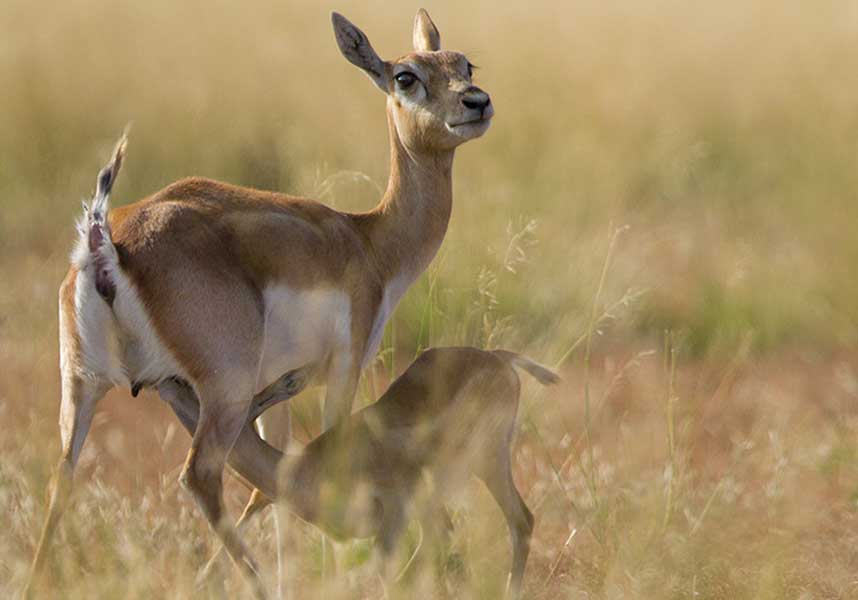About Tal Chhapar Sanctuary
Tal Chhapar Sanctuary, famed for its blackbuck population, dates back to 1920 when the Maharaja of Bikaner used it as a hunting reserve. This resulted in a decrease in the numbers of the blackbuck. Nonetheless, due to the conservation measures, the population has increased to nearly 2000 over the last fifteen years.
However, those who visit Tal Chhapar Sanctuary, find themselves most intrigued by the range of avifauna present. Nearly 122 species of birds – migratory and resident – can be glimpsed over the course of a year. This assortment of birds is surprising, given that the park lies on the fringes of Thar Desert and doesn’t have a lot of vegetation other than grasslands. Many believe this has been made possible by the administration at Tal Chhapar. They uprooted the Acacia trees that sucked the water of the ground and introduced local flora to the park, made little waterholes and ensured the park remains clean at all times. These efforts encouraged diversity.
Now, most visitors claim that their best experience has been seeing birds interact with each other and their preys, in a natural environment. What would be your fondest memory? Visit Tal Chhapar and find out!
Flora & Fauna
In Flora, majorly it is Motiya grass – sweet and edible; black bucks feed on it.
Majorly animals include black buck, blue bull, desert fox, desert rat, desert cat and the hedgehog. The birds that can be spotted all year round include partridges, skylarks, crested lark, brown dove, ring dove, brown dove, blue jay vulture and sand grouse. These birds are residents of the park. Migratory visitors include the European roller, rosy starlings, pale harrier, marsh harrier, imperial eagle, short toed eagle, tawny eagle, green bee eaters, sparrow hawk, demoiselle cranes, wagtails and black ibis.
Tal Chhapar Weather
Summers (March to June)
Summers are hot and dry with maximum temperature reaching upto 48°C in June. Hot dry winds (loo) prevail in May and June.
Winters (October to February)
Winters are cold with minimum temperature falling up to 8°C in December and January.
Monsoons (July to September)
Rainfall is highly erratic with average rainfall around 300 mm.
How to reach
By Road
Tal Chhpar is well connected by roads to major cities in Rajasthan. Jaipur is situated around 215 km from Tal Chappar.
By Rail
The nearest railway station to Tal Chhapar is at Ratnagarh (37 km). Other stations through which the park can be reached, include Churu (85 km) and Bikaner (132 km).
By Air
The airport closest to Tal Chhapar, is at Bikaner (148 km). Bikaner can be reached through connecting flights from Jaipur, Jodhpur and a number of other cities. The airport at Jaipur is situated at a distance of 215 km and has connectivity throughout India.

